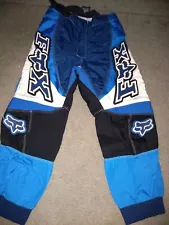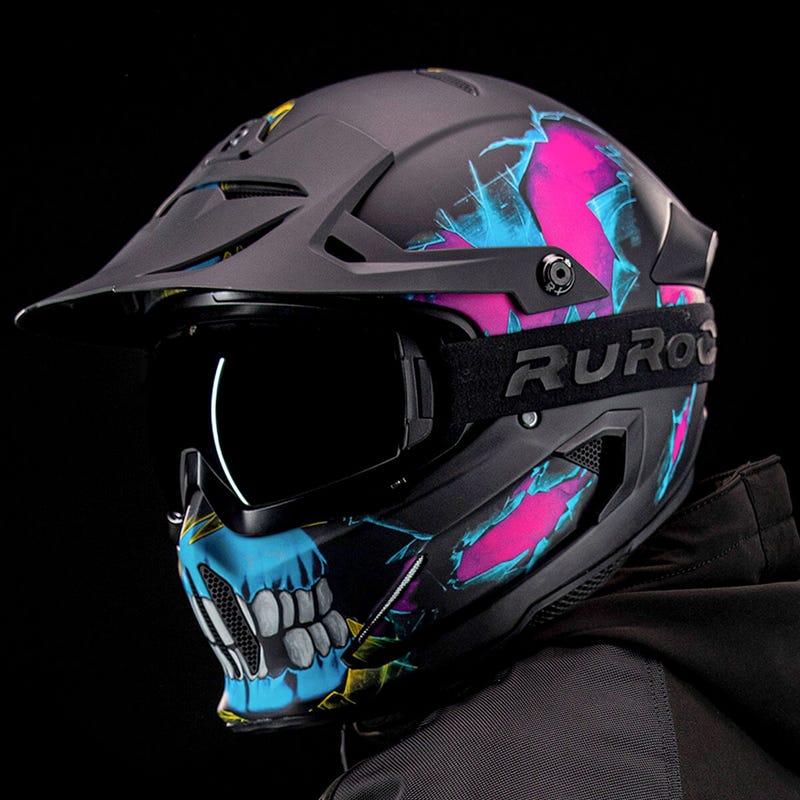OK, you've got your helmet and googles, riding boots, gloves, and good riding pants and jerseys. What more could you need?
Well, there are several more pieces of body armor available to provide additional protection for when you and your ride part company. Let's face it: anytime there is a contest between your soft body parts and hard rocks, pavement, or even grass, dirt or sand, your body parts are going to come in second place, and that is NOT a good place to be in that situation! I had friend who liked to remind me that second place was first loser! Even landing on soft sand or grass can deliver nasty bruises, friction burns, and abrasions.
Kidney belt would be next my on my list. This is an elastic band about 8" wide you wrap around your midsection. As indicated my its name, it covers your kidneys. Kidney belts usually have some reinforced bands to give extra protection to your body and your organs but they also provide extra back support that helps you maintain a good riding posture and minimizes muscle fatigue that leads to an aching back. It even helps hold your tummy a little flatter. Once you've worn a kidney belt you will greatly appreciate the extra support it gives and will feel somewhat undressed and vulnerable without one. Kidney belts also have the advantage of holding and supporting your abdomen. The heavy material along with the stiffeners provides a lot more support and protection than a shirt or jersey. I know riders who wear a chiropractic back brace under their jersey in lieu of a kidney belt. It provides the same basic support but usually lacks the extra protection of the stiffeners in motorcycle kidney belts. The extra support of either a back brace or kidney belt helps keep your organs from bouncing around on bumpy trails and minimizes spinal movement for greater comfort and less fatigue.
Then I would go for a chest protector. Chest protectors are made of sturdy plastic and basically surround your rib cage. It might better be called a torso protector because it protects your back as well as your chest. Some early models, often called Rock Jackets, pretty much ended there but modern versions usually include shoulder pads that cap your shoulders and pieces that even guard your collar bones Some riders prefer the rock jacket style because the extra collar bone and shoulder protection sometimes gets in the way of turning your head in a full face helmet, but I have found the slight inconvenience well worth the extra protection. That might be because my full face helmet once judo chopped and broke my collar bone in an accident when I was wearing a rock jacket style chest protector. Chest protectors are well ventilated so there usually isn't very much of a heat penalty to pay when wearing them. They might even provide some shade against direct sunlight. I added a D-ring near the bottom of one side where I can attach a fireman's glove strap to keep track of my gloves when I stop along the trail. I also add a piece of velcro to the center and a matching piece to the bite valve on my Camelbak hydration pack so I can attach the bite valve where it easy to reach when needed and doesn't easily get snagged on bushes out on the trail.
Hip pads are usually part of your riding pants. Just remember to put them in each time you put on your pants. They are not bulky nor made of hard plastic, but the added padding goes a long way to cushioning your hip bones against hard obstacles. Many riding pants also have extra protection in the form of plastic logos or other designs near your hips that serve to absorb and deflect sharp impacts.
Knee pads are, in my mind, almost mandatory. When riding an ATV or dirt bike your knees are often exposed to brush and your knees are very often the first part of your body to contact the ground in a get off, meaning you strike them at maximum velocity. Standard, simple knee pads are either strapped to your lower legs or tucked into pockets below the knees of your riding pants. They include a cup that covers you knee cap and a shin guard that extend down your leg into your riding boots. For even better protection go for professional knee braces. While they can be quite expensive, the extra protection they provide is well worth it. If you have had any previous knee injuries or weakness in your knees you should seriously consider getting knee braces. The are somewhat bulky but you get used to it. They not only cover you knees put also protect against over-extension and sideways displacement. Did you know it only takes about 12 lbs of pressure on the side of your knee to dislocate it? Compare that to the strength of your tibia (lower leg bone), which can typically withstand almost 2000 lbs downward force before snapping! Knee braces can help prevent sideways displacements and over-extension, saving you from a very extensive and painful injury. Knee pads are shown on the left, knee braces on the right
Elbow pads aren't as often seen on off road riders but I have found them to be very valuable. Your elbows, like your knees, tend to be among the first body parts to strike the ground during an accident. You know how it hurts when you bump your elbow! Like knee guards, elbow guards extend below the joint providing protection for your forearm as well. Coupled with the shoulder pads on a comprehensive chest protector, your arms are nearly covered completely, which can save you a lot of scrapes and abrasions and a lot of pain and spilled blood. Some riders find them too warm on hot days, but I have always felt the extra protection was well worth the slight discomfort. A friend of mine who was a seasoned desert racer, used to joke that if you went over the handle bars you should wave your hands in front of you to clear the debris away from your landing spot. Wearing elbow pads will do a lot better job of protecting your forearms and elbows from injury.
All in one body armor is available that combines kidney belt, elbow pads, and chest protector with a riding jersey so you can put it all on at once. It may make getting dressed and undressed a little easier but I prefer the added protection of individual pieces of armor. Slip on armor usually doesn't include the shoulder and collar bone guards found on state-of-the-art chest protectors, but it does cover chest, spine, kidneys, elbows and shoulders.
Bandanas aren't exactly body armor, but they are a good thing to include in your riding outfit. They do protect your neck from and wind burn. I roll mine up, soak it with water, and tie it around my neck. That does two very valuable things: it protects my neck between my jersey and helmet from sunburn and it helps keep my cool as the water evaporates. There are some major blood vessels fairly close to the skin in your neck and the wet bandana helps cool your blood going to and from your head, which helps keep your whole body more comfortable in hot weather. Bandanas can have other uses too. You can wear them bandit-style over your face to protect your nose and mouth from dust when riding exceedingly dusty trails or caught in a dust storm or to keep your face warmer when it turns cold. They can also be used for emergency slings and bandages so it is handy to have one conveniently tied around your neck if you or one of your riding buddies needs it.
Here's an odd suggestion for macho dirt bikers: wear panty hose! They provide a smooth, slick layer between your skin and your riding pants and work really well to prevent the dreaded "monkey butt" that often comes from straddling a saddle for hours of off road activity. Interestingly enough, they also help keep you warmer in cool weather but aren't noticeably hotter in warm weather. You can buy special underwear to prevent "monkey butt", but panty hose are a lot less expensive and get the job done. They also help protect your feet against blister in your riding boots.
One more item you might see are neck braces. They are basically padded devices that fit around your neck between your helmet and your shoulders. They are intended to help support your head and protect your neck from injuries while riding. However, many riders avoid them because, like chest protectors (only more so) they restrict head movement needed to maintain a good eye on your environment for safety.

Some riders avoid various pieces of body armor because they add weight and sometimes increase heat. However, I have found the added protection more than worth the added weight and any added heat.
In summary, you will find wearing full body armor will help you avoid a lot of injuries and is usually far more comfortable than ordinary boots, shirts, and jeans. Yes, you will have to put out a little investment, but I am sure you will find it is more than worth whatever it costs. It is also more than worth any discomfort from added weight or unwanted warmth. Besides that it looks cool!
Armor up!





